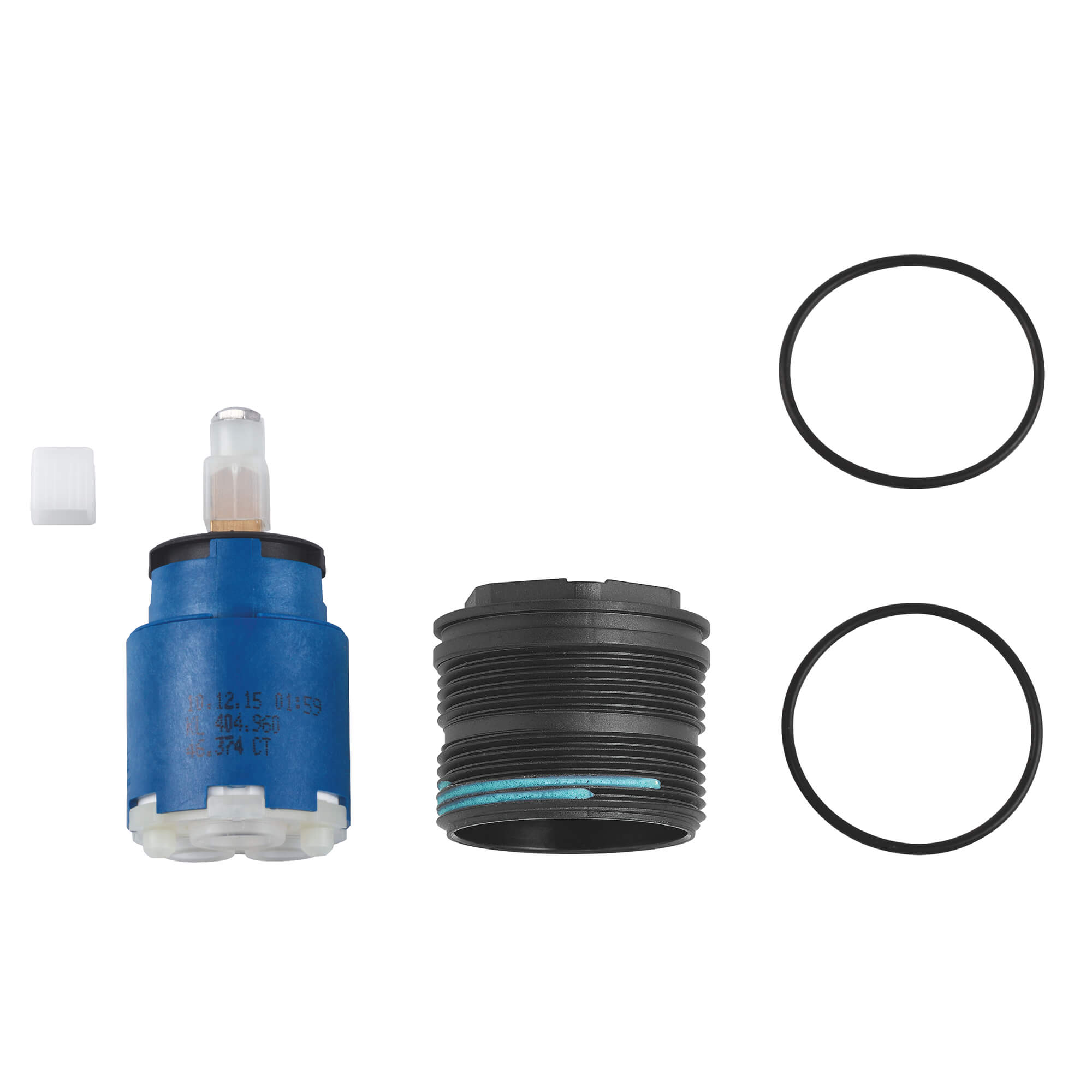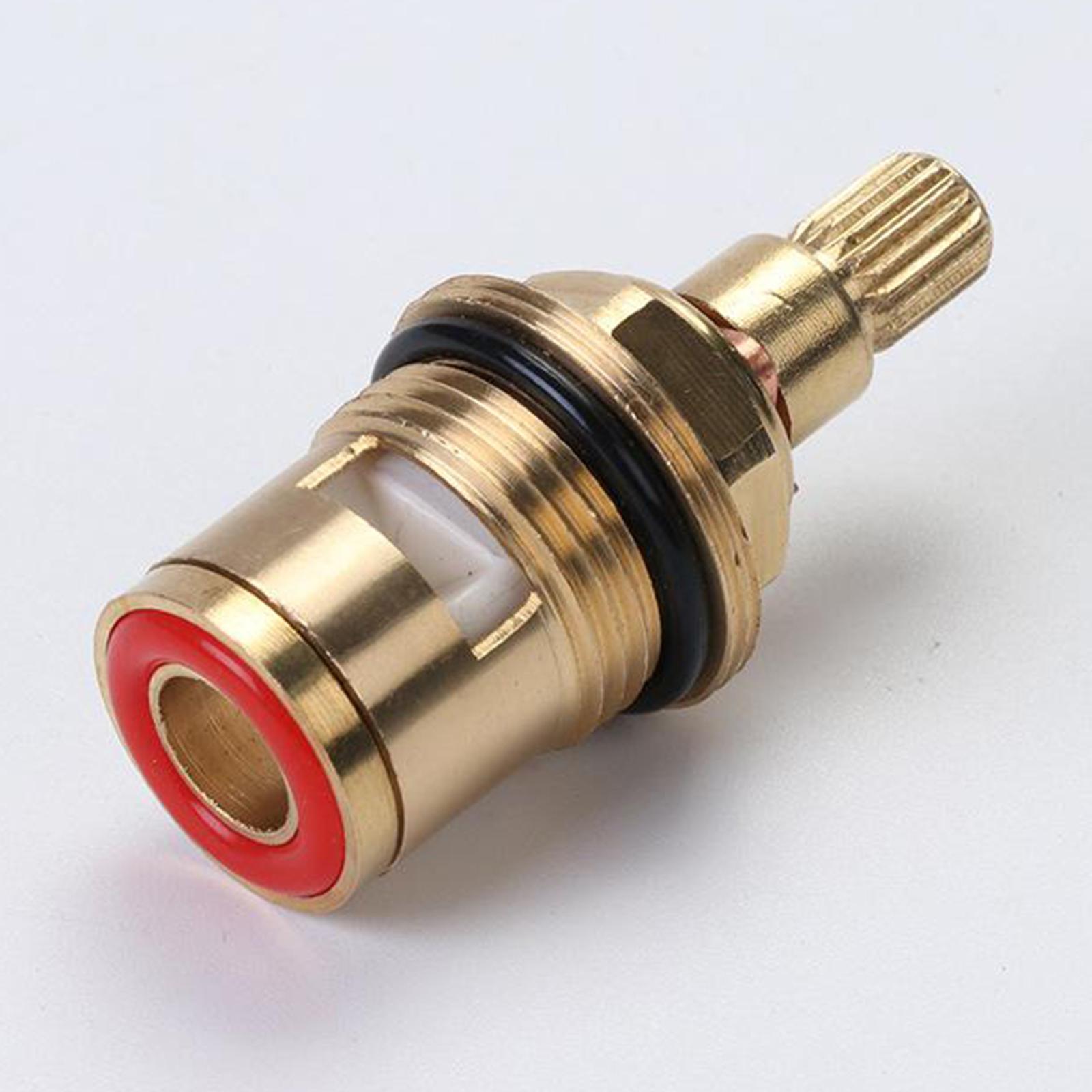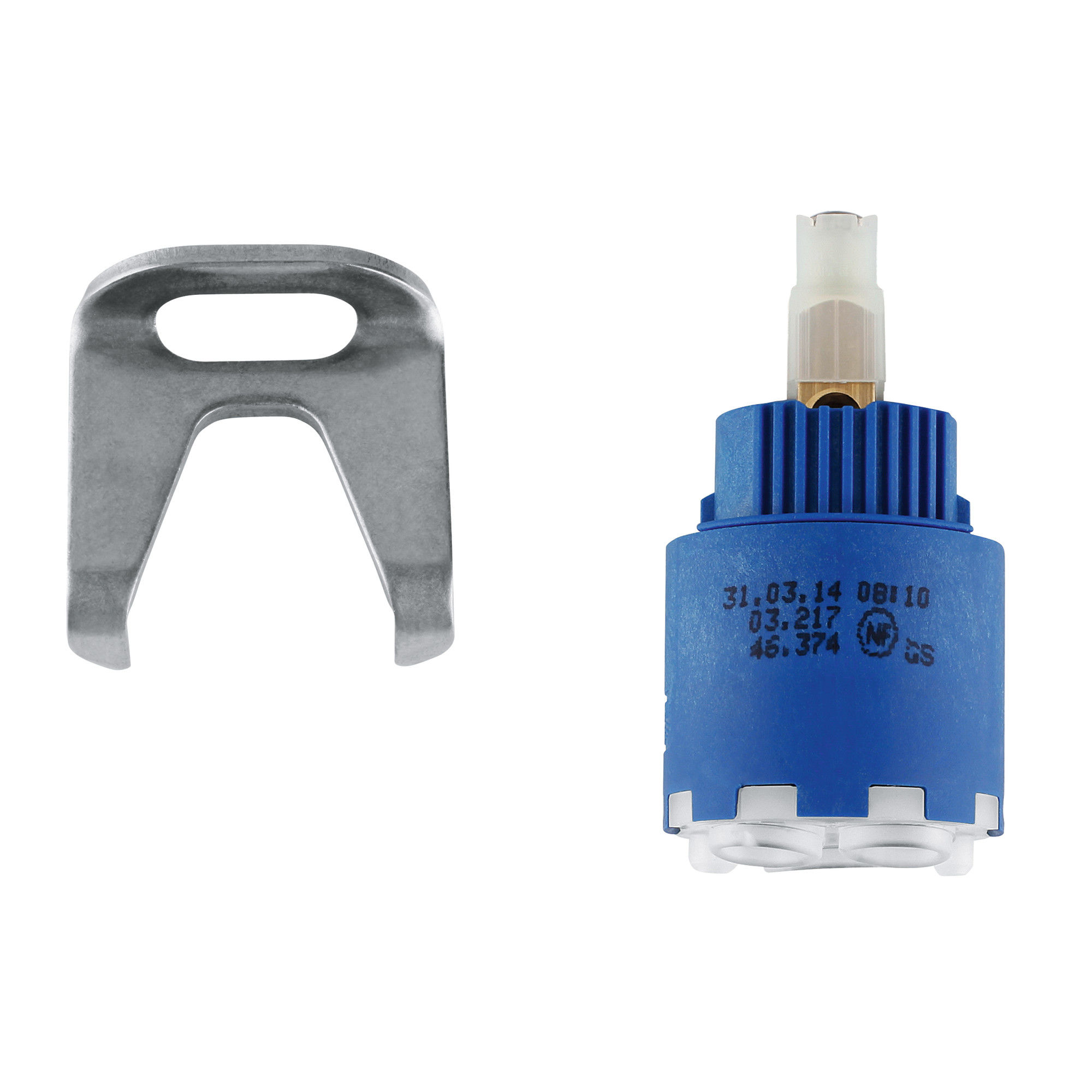Understanding Grohe Bathroom Faucet Cartridge Replacement

The heart of your Grohe bathroom faucet lies within its cartridge. This small, yet crucial component controls the flow of water and its temperature. Understanding its purpose and function is essential for efficient and effective maintenance.
Signs Indicating Cartridge Replacement
A malfunctioning cartridge can disrupt the smooth operation of your faucet, causing inconveniences like leaks, drips, or erratic temperature control. Here are some telltale signs indicating that your cartridge might need replacement:
- Leaking Faucet: A persistent drip from the spout or base of the faucet, even when the handles are fully closed, signifies a worn-out cartridge seal.
- Difficulty Controlling Water Flow: If you struggle to adjust the water flow, experience inconsistent water pressure, or find it difficult to shut off the water completely, the cartridge might be worn or damaged.
- Temperature Fluctuations: Erratic hot and cold water mixing, difficulty achieving desired temperature, or sudden temperature changes while running water suggest a faulty cartridge.
- Noisy Faucet: Unusual noises, such as grinding or rattling sounds during water flow, can indicate a worn-out or damaged cartridge.
Grohe Bathroom Faucet Cartridge Replacement Process
Replacing a Grohe bathroom faucet cartridge is a straightforward process that can be done by most homeowners with basic tools and a little patience. Here’s a comprehensive overview:
- Gather Necessary Tools: You’ll need a Phillips head screwdriver, a pair of pliers, a small wrench, a rag, and a new Grohe cartridge specifically designed for your faucet model.
- Turn Off Water Supply: Locate the shut-off valve for your faucet, typically found beneath the sink or on the wall, and turn it off completely.
- Remove Handle and Cap: Carefully remove the faucet handle using a Phillips head screwdriver. The handle might be secured by a screw or a retaining clip. Once removed, you’ll likely find a decorative cap beneath it. Remove this cap as well.
- Remove Cartridge Retaining Nut: Beneath the decorative cap, you’ll see the cartridge retaining nut. Use a wrench or pliers to loosen and remove this nut. Depending on the model, it might be a hex nut or a slotted nut.
- Remove Old Cartridge: Once the retaining nut is removed, the old cartridge should come out easily. If it’s stuck, gently wiggle it with your fingers or use a small tool to help remove it. Be careful not to damage the faucet body.
- Install New Cartridge: Carefully align the new cartridge with the faucet body and gently push it into place. Ensure the cartridge is fully seated and aligned correctly.
- Replace Retaining Nut: Secure the new cartridge by hand-tightening the retaining nut. Do not overtighten it, as this can damage the cartridge or the faucet body.
- Reassemble Handle and Cap: Replace the decorative cap and then the handle, securing them with the screw or clip. Ensure the handle is securely attached.
- Turn On Water Supply: Carefully turn the water supply back on and check for leaks. If there are any leaks, tighten the retaining nut or the handle screw slightly.
Important Note: Refer to your faucet’s user manual for specific instructions and diagrams related to your model. This guide provides a general overview and may not be applicable to all Grohe bathroom faucet models. Always consult the manufacturer’s recommendations for proper installation and maintenance procedures.
Identifying the Correct Cartridge
Replacing a Grohe bathroom faucet cartridge requires choosing the right replacement part, ensuring a perfect fit and smooth operation. Selecting the wrong cartridge can lead to leaks, improper function, and potential damage to your faucet.
Finding the Cartridge Model Number
The most reliable way to identify the correct cartridge is to find its model number. This number is often printed on the cartridge itself or on the faucet’s documentation.
- Check the Cartridge: If you can access the old cartridge, look for a printed model number on its surface. The number might be small, so you may need a magnifying glass.
- Examine the Faucet Body: Grohe often engraves the model number on the faucet body, usually near the base or spout. This number may be preceded by “Model” or “Type.”
- Consult the User Manual: The user manual that came with your faucet should contain the model number and information about replacement parts. If you’ve lost the manual, you can often find a digital copy online by searching for the faucet’s model number.
- Contact Grohe Support: If you’re still unable to find the cartridge model number, contact Grohe customer support. They can assist you in identifying the correct replacement part based on your faucet’s model and details.
Tools and Materials

Replacing a Grohe bathroom faucet cartridge requires a specific set of tools and materials to ensure a smooth and successful repair. These tools are designed to handle the delicate components of the faucet, preventing damage and ensuring a proper fit.
Essential Tools and Materials
| Tool/Material | Description | Purpose | Alternatives |
|---|---|---|---|
| Phillips Screwdriver | A screwdriver with a cross-shaped head, typically size #2. | Used to remove the screws holding the faucet handle and escutcheon plate. | Flathead screwdriver (if the screws are slotted). |
| Adjustable Wrench | A wrench with an adjustable jaw that can be tightened or loosened to fit different sizes of nuts and bolts. | Used to loosen and tighten the faucet body nut, which holds the cartridge in place. | Channel lock pliers (for a more secure grip). |
| Cartridge Removal Tool | A specialized tool designed to grip and remove the old cartridge from the faucet body. | Used to safely remove the old cartridge without damaging the faucet body. | Needle-nose pliers (with caution, as they can damage the cartridge). |
| Teflon Tape | A thin, white, self-sealing tape used to create a watertight seal on threaded connections. | Used to wrap around the threads of the faucet body nut and the cartridge to prevent leaks. | Pipe thread sealant (for a more permanent seal). |
| Cleaning Cloth | A soft, absorbent cloth for cleaning the faucet parts. | Used to wipe away dirt, debris, and any leftover sealant before reassembly. | Paper towels (but may leave lint behind). |
| New Grohe Cartridge | The replacement cartridge specifically designed for your Grohe faucet model. | The heart of the faucet, responsible for controlling water flow and temperature. | None (a compatible replacement cartridge is essential). |
Step-by-Step Replacement Procedure

Replacing a Grohe bathroom faucet cartridge is a straightforward process that can be accomplished with basic tools and a little patience. This step-by-step guide will walk you through the process, ensuring a smooth and successful replacement.
Shutting Off the Water Supply
Before beginning any work on your faucet, it’s crucial to shut off the water supply to prevent flooding. This will also prevent any accidental water damage to your bathroom or surrounding areas.
- Locate the shut-off valve for your bathroom sink. It’s typically found underneath the sink or on the wall behind the sink.
- Turn the valve clockwise to shut off the water supply. You’ll hear a distinct clicking sound as the valve closes.
- After shutting off the valve, run the faucet to drain any remaining water in the pipes. This will minimize the amount of water that spills out during the cartridge replacement process.
Disassembling the Faucet
Once the water supply is shut off, you can begin disassembling the faucet to access the cartridge.
- Remove the handle from the faucet. This is typically done by turning the handle counter-clockwise until it comes off. Depending on the faucet model, you may need to use a small tool like a hex wrench or screwdriver to remove the handle.
- Once the handle is removed, you’ll see a decorative cap or escutcheon covering the cartridge. Remove this cap by gently prying it off with a small flat-head screwdriver.
- You’ll now see the cartridge housing, which is typically secured by a screw or a nut. Use a screwdriver or wrench to loosen and remove this screw or nut.
- With the cartridge housing removed, you can now carefully pull out the old cartridge. You may need to gently wiggle it back and forth to loosen it.
Installing the New Cartridge
Now that the old cartridge is removed, you can install the new one.
- Ensure that the new cartridge is compatible with your faucet model. If you’re unsure, consult the manufacturer’s instructions or contact a plumber.
- Carefully insert the new cartridge into the cartridge housing. Ensure that it’s properly seated and aligned.
- Reinstall the cartridge housing and tighten the screw or nut securely.
- Replace the decorative cap or escutcheon.
- Reinstall the faucet handle and turn it clockwise to secure it.
Testing the Faucet
After installing the new cartridge, it’s crucial to test the faucet to ensure that it’s working correctly.
- Turn the water supply back on by turning the shut-off valve counter-clockwise.
- Check for any leaks around the cartridge housing, handle, or spout.
- Run the faucet for a few minutes to allow the water pressure to stabilize.
- Test the hot and cold water flow to ensure they’re working properly.
Troubleshooting Common Issues: Grohe Bathroom Faucet Cartridge Replacement

Even with careful execution, complications can arise during a Grohe bathroom faucet cartridge replacement. This section will guide you through common issues, their causes, and effective solutions.
Cartridge Doesn’t Turn Smoothly, Grohe bathroom faucet cartridge replacement
A common issue is a cartridge that doesn’t turn smoothly, leading to a stiff or erratic flow. This can be caused by several factors:
- Clogged Cartridge Seat: Debris or mineral deposits can accumulate in the cartridge seat, preventing a smooth seal and causing resistance.
- Damaged O-Rings: Worn or damaged O-rings around the cartridge can cause friction and impede smooth operation.
- Improper Cartridge Installation: If the cartridge isn’t properly seated in the valve body, it can lead to uneven pressure and a stiff feel.
To address these issues:
- Clean the Cartridge Seat: Carefully remove any debris or mineral deposits from the cartridge seat using a small brush or a cotton swab dipped in vinegar.
- Replace O-Rings: Inspect the O-rings for wear or damage. If necessary, replace them with new ones.
- Reinstall the Cartridge: Ensure the cartridge is fully seated in the valve body, making sure it sits flush and doesn’t wobble.
Water Leakage
Water leakage after cartridge replacement can be frustrating. Here are some common causes:
- Loose Cartridge: If the cartridge isn’t properly tightened, water can leak around the cartridge seat.
- Damaged O-Rings: Worn or damaged O-rings can allow water to escape around the cartridge.
- Loose Stem Nut: If the stem nut isn’t properly tightened, water can leak from the stem.
Troubleshooting steps:
- Tighten the Cartridge: Ensure the cartridge is securely tightened without overtightening.
- Replace O-Rings: Inspect the O-rings for wear or damage. If necessary, replace them with new ones.
- Tighten the Stem Nut: Ensure the stem nut is securely tightened, preventing water leakage from the stem.
No Water Flow
Lack of water flow after replacing the cartridge can be due to:
- Blocked Supply Line: A blockage in the supply line leading to the faucet can restrict water flow.
- Improper Cartridge Installation: If the cartridge isn’t properly installed, it might obstruct water flow.
Troubleshooting steps:
- Check the Supply Line: Ensure the supply line is open and free of any blockages.
- Reinstall the Cartridge: Double-check the cartridge installation, ensuring it’s properly seated and aligned.
Maintenance and Care
Proper maintenance of your Grohe bathroom faucet is essential for ensuring its long-lasting performance and preventing costly repairs. By following a few simple steps, you can keep your faucet functioning smoothly and looking its best for years to come.
Cleaning and Lubricating the Cartridge
Regular cleaning and lubrication of the cartridge are crucial for maintaining the smooth operation of your Grohe bathroom faucet.
- Cleaning the Cartridge:
- Remove the cartridge from the faucet body, as Artikeld in the previous steps.
- Carefully inspect the cartridge for any debris or mineral deposits.
- Use a soft-bristled brush or a non-abrasive cleaning cloth to gently remove any dirt or grime.
- Rinse the cartridge thoroughly with clean water to ensure all debris is removed.
- Lubricating the Cartridge:
- Apply a small amount of silicone-based lubricant to the O-rings and seals of the cartridge.
- Avoid using petroleum-based lubricants, as these can damage the cartridge.
- Ensure the lubricant is evenly distributed and does not obstruct any moving parts.
Regular Inspection and Preventative Maintenance
Regular inspection and preventative maintenance are vital for preventing future issues and extending the lifespan of your Grohe bathroom faucet.
- Inspecting the Faucet:
- Check for any leaks or drips from the faucet spout, handle, or base.
- Ensure the handle operates smoothly and without any resistance.
- Examine the finish for any signs of corrosion or wear.
- Preventative Maintenance:
- Clean the faucet regularly with a soft cloth and mild soap to remove any dirt or grime.
- Avoid using harsh chemicals or abrasive cleaners, as these can damage the finish.
- Periodically lubricate the cartridge, as Artikeld in the previous section.
